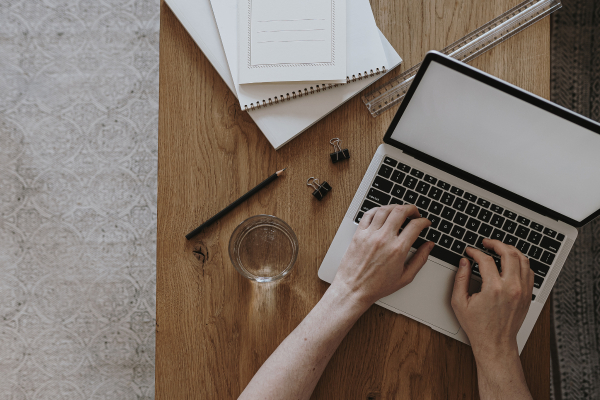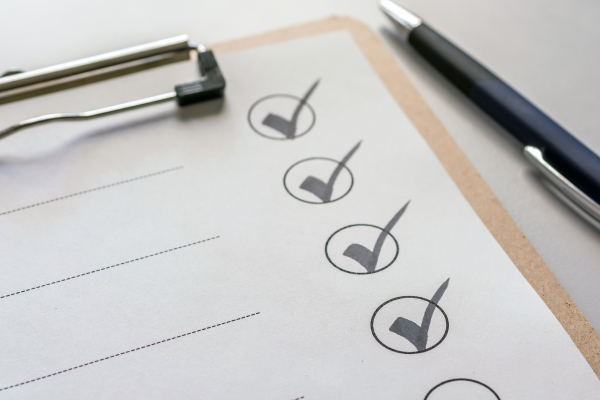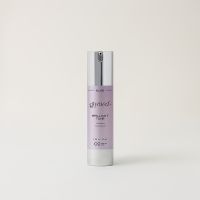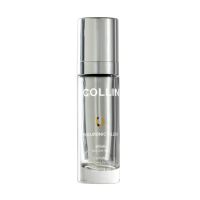 DERMASCOPE
The authority on professional skin care
DERMASCOPE
The authority on professional skin care
Lymph Health & the Skin: It’s All Connected
Written by Shannon EsauPerhaps one of the most incredible things about the human body is that everything in it is connected. And when one piece of the biological puzzle is compromised, it causes a ripple effect, impacting a host of other functions, organs, and vital systems. So, when talking about skin – the body’s largest organ – skin care professionals would be remiss if they did not discuss the importance of the lymphatic system to its overall health and appearance.
The lymphatic system is an intricate network of tissues and organs that are imperative to the body’s detoxification process. It also plays an important role in the body’s ability to nourish and regenerate tissue, filter metabolic waste, and keep the immune system healthy. When working correctly, the lymphatic system dispels toxins that can be harmful to both the immune system and skin health. However, when the system becomes sluggish, impurities may get trapped in cells, leading to acne, loss of elasticity, and premature aging of the skin.
Fortunately, the lymphatic flow can be stimulated through movement – a technique skin care professionals are using in the treatment room to benefit clients who suffer from rosacea, acne, puffiness, overall sluggish skin, and post-surgery inflammation and bruising. But, before diving into how to invigorate the lymphatic system in the treatment room, it is imperative to gain a deeper understanding of the system itself and its connection to the skin.
A LOOK AT THE LYMPHATIC SYSTEM
Most associate the lymphatic system with the lymph nodes in the throat, armpit, or groin that can become swollen and even sensitive to the touch when the body is fighting an illness. The lymphatic system spans the entire body, comprising a network of tissues, vessels, and organs, which include ducts, nodes, and the lymph –– all located just below the skin. This system collects excess fluid (lymph) that drains from cells and tissue and returns it to the bloodstream. It is also an important part of the immune system, producing and releasing lymphocytes – white blood cells, that monitor and destroy foreign invaders like bacteria, viruses, and fungi.
The lymph collects extra fluid drained from cells and tissues. It transports the all-important lymphocytes. It is often recognized as the clear, yellowish fluid that accompanies blood when a pustule is extracted.
Lymph nodes filter lymph fluid, produce immune cells to fight infection and rid the body of foreign antibodies like bacteria. When bacteria or infection is identified in lymph fluid, the lymph nodes go to work producing more white blood cells to eliminate the bacteria, which causes the swelling. The nodes are also where the body clears or purifies itself of the bacteria or any debris the lymph collected from the cellular tissue.
A CLOGGED LYMPHATIC SYSTEM
Since lymph is not a part of the vascular system, it does not have the benefit of a pump like the heart to keep it circulating and moves only one way – upward and away from gravity. Already at battle with gravity, the lymphatic system is especially susceptible to other external factors, mainly the overexposure of environmental toxins that may overload the system. Furthermore, inadequate sleep, a poor diet high in processed foods, dehydration, stress, and a lack of exercise can stagnate lymph flow and sometimes stops it altogether.
Not only can a compromised lymphatic system lead to acne, loss of elasticity, and premature aging of the skin, it can also weaken the body’s immune system, contributing to a slew of autoimmune conditions that are detrimental to a clients’ overall health. With that in mind, how can a skin care professional identify an underperforming lymphatic system? A few signs include,
- Swelling in fingers, bloating, and excess weight
- Feeling stiff and sore when waking up
- Cold hands and feet
- Chronic fatigue
- Digestive issues
- Dry or itchy skin
- Increased colds, flu, and sinus infections
- Enlarged lymph nodes
- Skin hardening and thickening
SUPPORTING THE LYMPHATIC SYSTEM IN THE TREATMENT ROOM
In the treatment room, stimulate sluggish lymph through a technique called manual lymphatic drainage or stimulate the lymph flow, as well as other ingredients and treatments that can stimulate the flow.
Stimulating lymphatic flow is a precise skin movement technique that occurs at the surface level of the skin. The technique does not involve moving any of the tissue underneath the skin. It stimulates the lymph to move more efficiently, helping the body to purify and cleanse itself.
The manual lymphatic flow technique can be used in tandem with acne, rosacea, and post-surgical treatments to help heal, reduce inflammation, and restore the skin back to its optimal health.
LYMPH FLOW FOR ACNE
Stagnation in the lymphatic system can cause toxin-filled lymph to build up around lymph nodes. Considering 38% of the body’s lymph nodes are located in the neck, once lymph slows, the area around the neck, jawline, and ears are the most susceptible to breakouts due to the concentration of toxic fluids in this area.
For clients challenged by acne, the manual lymphatic flow technique may be used with an acne corrective facial to assist in the healing process by reducing inflammation and swelling. The relief of pressure on acne lesions is an important step in recovery and brings solace to the client. Lymphatic flow also supports the clearing of toxins.
For the facial treatment, a glycolic-based cleanser followed by a salicylic scrub will deeply cleanse the skin and provide antibacterial support. After the cleanse, a digestive enzyme may be applied to dissolve dead cells, clean up impurities, and stimulate cellular turnover. Once the enzyme has been removed, apply nutrients and anti-inflammatory ingredients and then perform a lymph flow technique. Next, apply a mask with wasabi to continue increasing circulation and provide healing support. To finish, a combination of nourishing and corrective ingredients like grapeseed oil, benzoyl peroxide, allantoin, epidermal growth factor, and natural zinc will protect, and provide calming, soothing support.
LYMPH FLOW FOR ROSACEA
Lymphatic vessels are responsible for removing inflammatory immune cells that cause chronic facial redness and flushing, which is why it is important for those with rosacea to understand the importance of healthy lymphatic vessels. It is imperative to recognize and treat these issues early before the lymphatic vessels are physically damaged, functionally inactive, or too inflamed to flush excess fluid buildup and toxins. The goal for rosacea clients is to provide strengthening and reduce the underlying inflammation using the manual lymphatic flow technique.
The treatment begins with a green tea and salicylic-based cleanser, which provides antibacterial support, followed by salicylic peeling cream blended with a milk-based mask. After the mask and peel cream has been thoroughly removed, apply a nourishing cocktail of essential fatty acids, sea buckthorn oil, and vitamins. This might be followed by a second mask application using the same milk-based formula blended with a nourishing serum of essential fatty acids and vitamins. While the mask is on the skin, gently roll chilled ice globes over the face to reduce inflammation and redness. Finish with growth factor serum and perform a lymphatic flow technique.
In the case of rosacea, it may be best to leave the manual lymphatic flow technique for the end of the treatment so as not to disrupt the flow. Typically, this yields complete results because the skin is able to continue to drain after the client leaves.
LYMPH & INFLAMMATION
When clients have puffiness around the eyes, or even come to the spa post-cosmetic surgery, manual lymphatic flow supports the movement of the fluid creating the edema (or swelling), and aids in the reduction of inflammation and bruising. For post-surgery, offer the stimulate lymph drainage as a stand-alone treatment.
When performing a manual lymphatic flow treatment, the clearing will always start at the base, working to clear the area so the lymph has a place to go. Using the thumbs, begin with parallel strokes from the middle of the chest to the collarbone. Progress up to the middle of the neck to the top of the neck, moving the lymph down. Then, move along the bottom of the face, to the cheek area, to the bottom of the jawline. Finish with the forehead, continuing to move the lymph down. This technique does not require a lot of pressure, rather it is a feathery touch with the movement coming from the body to create an even pressure. Movement is in a circular motion in the direction the lymph must flow.
As noted, this is a very precise movement, and technique that takes time to learn. Do not expect to master it in a day. If new to the technique, take a course through a school that specializes in lymph flow. It can take hours to learn proper technique, but once it is mastered a skin care professional can offer it as an add-on service in the treatment room to further results.
OUTSIDE THE TREATMENT ROOM
Fortunately, lymphatic system support is also something clients can do on their own between treatments. Advise clients on the number of simple changes they can make to their daily routines to keep lymph stimulated or to jump start it when it is sluggish. Some tried-and-true ways to keep the lymph in motion, include regular exercise. This is perhaps the most effective way to stimulate lymph flow. The contraction of muscles during exercise pumps lymph movement from the inside out. Hot and cold showers also aid in lymph flow. Hot water helps to dilate the blood vessels while cold water causes them to contract. Alternating between the two can create a natural pump action to force toxins out of the body. Dry brushing and scrubbing is more than just a fad, dry brushing or using a body scrub in circular motions for 10 minutes a day before showering can help increase lymph flow. Deep breathing (in the diaphragm) is also beneficial. This technique also acts as a pumping action to help the lymphatic system transport toxins into the bloodstream and then to the liver for detoxification. By drinking an adequate amount of clean water – at least up to half of your weight in ounces per day can help further cleanse one’s system of toxins. Similarly, decreasing caffeine and alcohol intake can help avoid dehydration.
A regular massage can produce many important physiological effects on the body, including increased lymphatic drainage and removal of toxins. Gua sha, an ancient Chinese healing technique, utilizes a tool (usually a natural stone) to massage the skin and can increase lymphatic drainage. Release neck and jaw muscle tension by stretching neck and jaw muscles. Lean the head toward either shoulder, as this will move the muscles by the neck lymph nodes, stimulating lymph flow. Wear loose-fitting clothes as tight clothing can reduce circulation in the lymphatic system and can lead to an accumulation of toxins.
A proper diet rich in nutrients is also essential to lymph health. Some of the best cleansing foods for the lymphatic system include:
- leafy green vegetables
- low sugar fruits
- ground flaxseed
- chia seeds
- avocados
- garlic
- brazil nuts
- almonds
- walnuts
- cranberries
In addition to these, drinking herbal teas can stimulate lymph flow. Look for herbs like echinacea, peppermint, astragalus wild indigo root, goldenseal, cilantro, poke root, and parsley.
The pandemic has been stressful for most and has made daily rituals, like going to the gym and stocking up at the grocery store a bit more difficult. Now is the perfect time to have open conversations with clients to learn about their current habits, identify whether they are exhibiting any signs of a clogged lymphatic system, and determine if delivering a long-overdue boost to the system is needed to get it back on track.

Shannon Esau is the CEO and national educator at Rhonda Allison Cosmeceuticals, where she oversees the company’s strategic growth, development of new product formulations and innovations, and the educational and instructional programming. She brings more than 20 years’ experience in the aesthetic industry. Esau has also completed advanced chemistry studies in cosmetic formulation and formerly owned and operated three advanced skin care clinics in the Dallas and Fort Worth metroplex.










